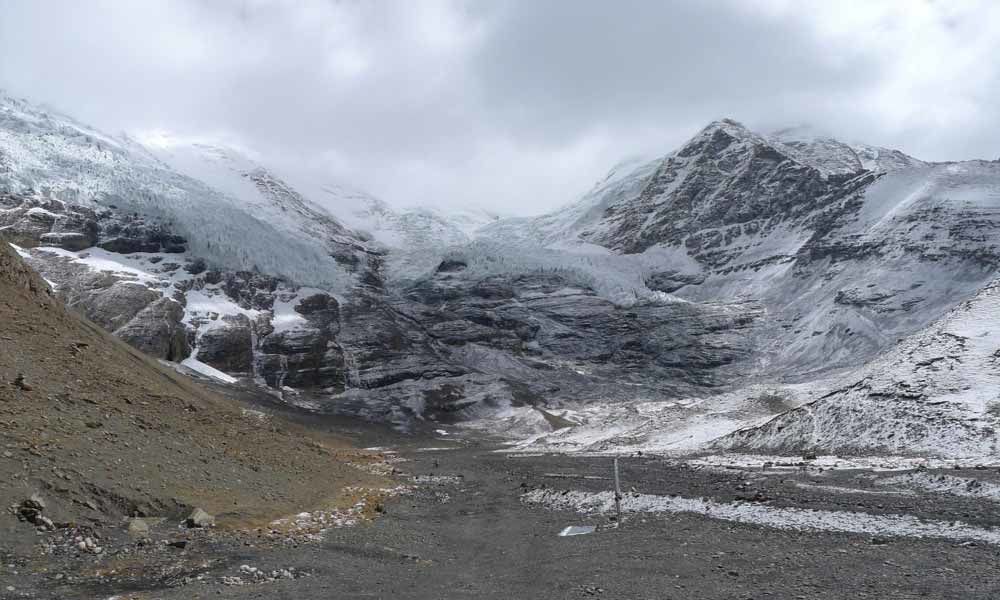Himalayan glaciers melting doubled since 2000: Study

Melting of Himalayan glaciers has doubled since the start of the 21st century due to rising temperatures, losing over a vertical foot and half of ice each year and potentially threatening water supply for hundreds of millions of people in countries including India, a study has found.
Washington: Melting of Himalayan glaciers has doubled since the start of the 21st century due to rising temperatures, losing over a vertical foot and half of ice each year and potentially threatening water supply for hundreds of millions of people in countries including India, a study has found.
The analysis, spanning 40 years of satellite observations across India, China, Nepal and Bhutan, is the latest and perhaps most convincing indication that climate change is eating the Himalayas' glaciers, researchers said. It indicates that glaciers have been losing the equivalent of more than a vertical foot and half of ice each year since 2000 -- double the amount of melting that took place from 1975 to 2000.
"This is the clearest picture yet of how fast Himalayan glaciers are melting over this time interval, and why," said Joshua Maurer, a PhD candidate at Columbia University in the US. While not specifically calculated in the study, the glaciers may have lost as much as a quarter of their enormous mass over the last four decades, said Maurer, lead author of the study published in the journal Science Advances. Currently harbouring some 600 billion tonnes of ice, the Himalayas are sometimes called the earth's "Third Pole." The study synthesises data from across the region, stretching from early satellite observations to the present.
The synthesis indicates that the melting is consistent in time and space, and that rising temperatures are to blame. Temperatures vary from place to place, but from 2000 to 2016 they have averaged one degree Celsius higher than those from 1975 to 2000. Researchers analysed repeat satellite images of some 650 glaciers spanning 2,000 kilometers from west to east. Many of the 20th-century observations came from recently declassified photographic images taken by US spy satellites. They created an automated system to turn these into 3D models that could show the changing elevations of glaciers over time.
They then compared these images with post-2000 optical data from more sophisticated satellites, which more directly convey elevation changes. They found that from 1975 to 2000, glaciers across the region lost an average of about 0.25 metres of ice each year in the face of slight warming. Following a more pronounced warming trend starting in the 1990s, starting in 2000 the loss accelerated to about half a metre annually. Recent yearly losses have averaged about 8 billion tonnes of water, or the equivalent 3.2 million Olympic-size swimming pools, said Maurer.
Asian nations are burning ever-greater loads of fossil fuels and biomass, sending soot into the sky, researchers said. Much of it eventually lands on snowy glacier surfaces, where it absorbs solar energy and hastens melting. Researchers compiled temperature data during the study period from ground stations and then calculated the amount of melting that observed temperature increases would be expected to produce. They then compared those figures with what actually happened.
They matched. "It looks just like what we would expect if warming were the dominant driver of ice loss," Maurer said. The Himalayas are generally not melting as fast as the Alps, but the general progression is similar, say the researchers. The study does not include the huge adjoining ranges of high-mountain Asia such as the Pamir, Hindu Kush or Tian Shan, but other studies suggest similar melting is underway there as well.
Some 800 million people depend in part on seasonal runoff from Himalayan glaciers for irrigation, hydropower and drinking water. The accelerated melting appears so far to be swelling runoff during warm seasons, but scientists project that this will taper off within decades as the glaciers lose mass. This will eventually lead to water shortages. Even on Mount Everest, long-lost corpses of climbers who failed to return are emerging from melting ice and snow along trails.
The study shows that "even glaciers in the highest mountains of the world are responding to global air temperature increases driven by the combustion of fossil fuels," said Joseph Shea, a glacial geographer at the University of Northern British Columbia in Canadia who was not involved in the study. "In the long term, this will lead to changes in the timing and magnitude of streamflow in a heavily populated region," said Shea.
















